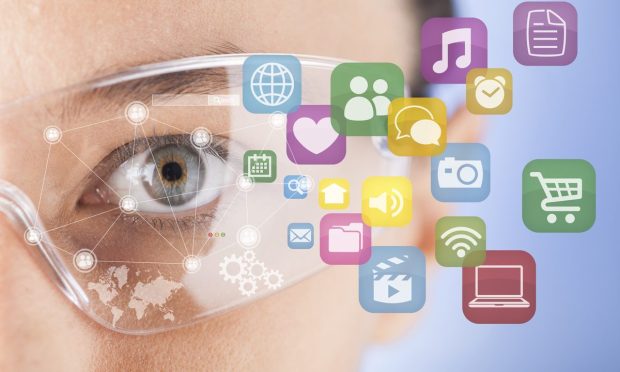5G Connectivity Expands the Capabilities of Glass Wearables

With the addition of 5G connectivity to glass wearables, technicians, engineers, warehouse workers and other remote employees will be able to employ the low latency of 5G while continuing to work hands-free rather than having to hold a phone. This will enable a supervisor to see what a remote worker is seeing in high-definition video and will allow developers to add more robust augmented reality features.
“5G Edge is what really allows us to drive a lot more power and capability to these glasses, because we have orders of magnitude greater processing power up in the cloud,” T.J. Vitolo, who leads the XR (augmented and virtual reality) organization at Verizon, told PYMNTS. “Through 5G, we have extremely low latency which allows for the rapid delivery of assets that allow for a very seamless experience of the glass that’s much more capable of what they can do today as a standalone device.”
Creating a Collaborative Experience For Remote Workers
On Jan. 4, Verizon announced that it will soon offer BlueJeans Meetings preloaded on Google’s Glass Enterprise Edition 2 glass wearables sold by Verizon. When paired with a Google Pixel 6 phone, the phone will serve as a 5G mobile hotspot, enabling the glass wearables to utilize 5G’s low latency, and users to work hands-free while using high-definition video.
“From a customer perspective, the idea of not having to find some sort of connectivity to those glasses via WiFi, especially when in a remote scenario, is great with Google,” Vitolo said. “It quickly pairs to the phone and goes right to the 5G network.”
The BlueJeans Meetings video conferencing app provides a “see what I see” experience so that a back-office client can see what a remote user wearing the glasses sees. Vitolo said the primary use case for this experience is a remote support scenario.
“Field workers, factory workers, whatever might be the case, that have limited experience in things outside their domain are now able to troubleshoot, diagnose and fix things through remote support — remote support that’s guided by a bit more than audiovisual feedback, but with some additional tools that help for a better collaborative experience versus just a communication experience,” Vitolo said.
Giving Support Personnel Greater Flexibility
BlueJeans Meetings also gives the back-office client using a PC some control over the communication, enabling them to turn on the flashlight on the glasses or zoom in using the digital zoom within the camera.
“This gives the support assistant in the back office that much more flexibility to help understand the scene or the information that’s being broadcasted by the end client,” Vitolo said.
With software, hardware and connectivity combined in one product, users of this package available through Verizon won’t have to discover and acquire the components themselves and then try to make them work, he added.
“Simplicity is the key,” Vitolo said. “We want to take a little bit of insanity out of that equation and really help our customers buy one product and just get the ball rolling.”
Allowing Developers to Add Mixed Reality Features
Looking ahead, Vitolo said that with the capabilities of 5G, developers could add mixed reality use cases to these devices. For example, with augmented reality, if a technician working on a site needed to unplug one of five wires, the support personnel in the back office could highlight the correct wire, and that highlight would be anchored to the object.
“The idea is that now it feels like someone is pointing over my shoulder, someone is there with me giving me explicit direction,” Vitolo said. “We want to continue to create that bond between the remote worker and the back-office support personnel in order to have the feeling as though you’re there supporting in person — and augmented reality is a big, big part of that.”
